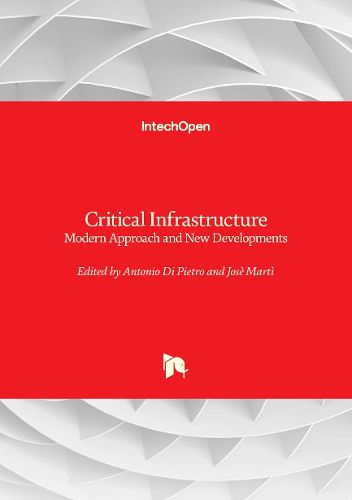Readings Newsletter
Become a Readings Member to make your shopping experience even easier.
Sign in or sign up for free!
You’re not far away from qualifying for FREE standard shipping within Australia
You’ve qualified for FREE standard shipping within Australia
The cart is loading…






This title is printed to order. This book may have been self-published. If so, we cannot guarantee the quality of the content. In the main most books will have gone through the editing process however some may not. We therefore suggest that you be aware of this before ordering this book. If in doubt check either the author or publisher’s details as we are unable to accept any returns unless they are faulty. Please contact us if you have any questions.
Modern critical infrastructures (CIs) (e.g., electricity, water, transportation, telecommunications, and others) form complex systems with a high degree of interdependencies from one CI to the others. Natural disasters (e.g., earthquakes, floods, droughts, landslides, and wildfires), humanmade disasters (e.g., sabotage and terrorism), and system faults (due to structural and equipment failures) will affect not only the directly impacted CI but all interdependent CIs. Risk assessment, therefore, has to be done over the entire system of CIs and should also include the social and personal impacts. According to a 2022 report, 80% of cities have been affected by significant climate change hazards represented by extreme heat (46%), heavy rainfall (36%), drought (35%), and floods (33%). The impacts of climate change, therefore, affect the complex system of the built environment and result in interrelated consequences at different scales ranging from single buildings to urban spaces and territorial infrastructures. Since it is not possible to reduce the severity of natural hazards, the main opportunity for lowering risk lies in reducing vulnerability and exposure. Vulnerability and exposure are related to urban development choices and practices that weaken the system's robustness. This volume reviews recent insights from risk identification and reduction to preparedness and financial protection strategies and proposes new approaches for better CIs and built environment protection.
$9.00 standard shipping within Australia
FREE standard shipping within Australia for orders over $100.00
Express & International shipping calculated at checkout
This title is printed to order. This book may have been self-published. If so, we cannot guarantee the quality of the content. In the main most books will have gone through the editing process however some may not. We therefore suggest that you be aware of this before ordering this book. If in doubt check either the author or publisher’s details as we are unable to accept any returns unless they are faulty. Please contact us if you have any questions.
Modern critical infrastructures (CIs) (e.g., electricity, water, transportation, telecommunications, and others) form complex systems with a high degree of interdependencies from one CI to the others. Natural disasters (e.g., earthquakes, floods, droughts, landslides, and wildfires), humanmade disasters (e.g., sabotage and terrorism), and system faults (due to structural and equipment failures) will affect not only the directly impacted CI but all interdependent CIs. Risk assessment, therefore, has to be done over the entire system of CIs and should also include the social and personal impacts. According to a 2022 report, 80% of cities have been affected by significant climate change hazards represented by extreme heat (46%), heavy rainfall (36%), drought (35%), and floods (33%). The impacts of climate change, therefore, affect the complex system of the built environment and result in interrelated consequences at different scales ranging from single buildings to urban spaces and territorial infrastructures. Since it is not possible to reduce the severity of natural hazards, the main opportunity for lowering risk lies in reducing vulnerability and exposure. Vulnerability and exposure are related to urban development choices and practices that weaken the system's robustness. This volume reviews recent insights from risk identification and reduction to preparedness and financial protection strategies and proposes new approaches for better CIs and built environment protection.